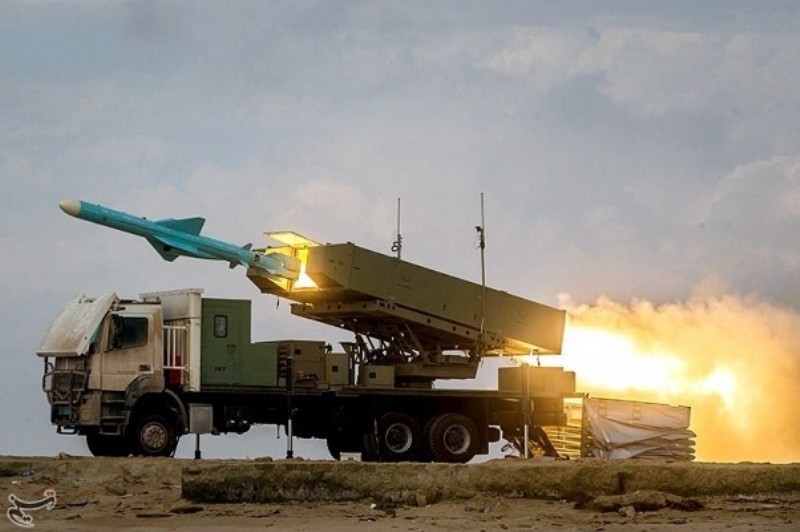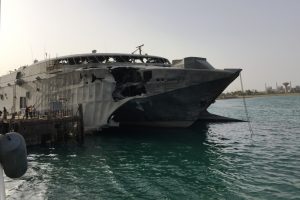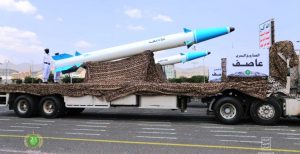
Houthi maritime strike capabilities
The Houthis have once more disrupted shipping in the Middle East and provoked an international maritime response by employing an array of relatively advanced long-range anti-ship capabilities. This article will explore the Houthi maritime strike system and how it has managed to garner so much attention.
Eight years in the making
The Houthi forces operating out of Yemen have acquired long-range weaponry with varying degrees of precision since 2015. They have used these missiles and drones to strike and critical infrastructure in Saudi Arabia with some success. From 2016 they began targeting ships transiting the Red Sea and Bab El Mandeb Straits. Between the 19th of November 2023 and 3rd of January 2024, the Houthis conducted 24 attacks against commercial shipping off the coast of Yemen, according to Anadolu. The missile attacks have returned mixed results, however, “they have driven shipping out of the Red Sea, so it could be said that the Houthis have achieved some strategic goals, even if their tactical efforts have not been uniformly successful,” Dr Sidhath Kaushal, the Sea Power Fellow at the Royal United Services Institute told EDR in a 3rd January interview.
Targeting
Precision strike assets like anti-ship cruise missiles (ASCM) need a precision targeting capability, they are ineffective without it. The Houthis employed coastal radars for the attacks in 2016, three of which were destroyed by the US Navy using Tomahawk cruise missiles that year. It is reasonable to presume that the Houthis are no longer relying on these systems for target detection and cuing. Of the imagery that shows the truck-launched C-802/Noor missiles, only one shows any kind of sensor fitted to the launch vehicle. This suggests that an external source is required.
The most likely option is the MV Bahshed, an Iranian surveillance ship operating in the Red Sea, according to a December 2023 article in the Wall Street Journal. However, “all a ship can really provide is range and bearing, so the Houthis would be relying on the seeker sweep width to find and successfully hit a target,” Dr Kaushal explained. The Houthis denied this accusation, and state that they have their own intelligence capabilities. It is probable that the Houthis employ a mix of targeting technologies, from open sources, to innovative solutions like the use of radars on commercial ships at harbour.
Chinese influence

In 2016 the HSV-2 Swift, a UAE logistics vessel was transiting the Bab El Mandeb strait at night when a missile struck it causing extensive damage. The US moved the USS Mason and USS Nitze, two Arleigh Burke-class guided missile destroyers, to the area to ensure freedom of navigation. The Mason was attacked on two separate occasions on the 9th and 12th October, it was accompanied by the Nitze on the 12th. Air defence missiles and decoys were deployed on both occasions and neither ship was hit. However, the events demonstrated that the Houthis had a capable anti-ship weapon, believed to be a derivative of the truck-launched C-802 from China.
The missile’s route to Houthi operators is convoluted: Iran is understood to have procured around 60 from China following the Gulf War in a bid to modernise its navy. The procurement led to US pressure on China and further sales were stopped. Iran continued to develop its own variant, which is known as the Noor missile. The Houthis have paraded another visually similar missile called Al-Mandeb 2. The C-802 is an export version of the YJ-82 anti-ship cruise missile (ASCM) developed by the China Electro-Mechanical Technology Academy. It is powered by a solid fuel accelerator that detaches after launch, before a turbojet engine takes over, providing a range of 120 km. The launch weight of the missile is 715 kg, 165 kg of which is the semi-armour piercing high explosive warhead. During flight it will operate 20 – 30 m above sea level and descend to 5 – 7 m for the final approach. The top speed is around 300 m/s and it employs a radar seeker likely operating in the X-band (8-12 GHz) range. The missile can be provided with GPS/satellite navigation based course correction, but the base version is only provided with an inertial navigation system.
Asif/Khalij Fars
The Houthis paraded an anti-ship ballistic missile (ASBM) that they called Asif in 2022. The missile bears a close resemblance to the Iranian Khalij Fars (Persian Gulf), which is an anti-ship variant of the Iranian Fateh-110 ballistic missiles. Iran claims that the Khalij Fars is fitted with an electro-optical and infrared seeker to enable anti-ship engagements, and in 2013 it reportedly hit within 8 m of a moving target. It is not clear whether the Khalij Far has a manoeuvring re-entry vehicle, which is critical for the accuracy of an ASBM. “The stated accuracy given by Iran is very precise. It seems more likely that this was actually a cooperative target,” Dr Kaushal said.

It is a solid fuel missile with a 650 kg warhead and a top speed of 1,029 m/s (Mach 3) in its terminal phase. The Houthis claimed that their Asif had a range of 400 km and a 550 kg warhead, but it is nonetheless believed to be based on Khalij Fars technology. The Houthis have also paraded a missile called Falaq-1, that is also similar to the Khalij Fars and provides a range of 200 km with an EO seeker. “EO seekers typically have a narrower field of view than a radar seeker,” Dr Kaushal explained adding that “this means they require more accurate target cuing, but at the same time they are harder to decoy or jam than a radar seeker.” As is the case with the C-802, the primary challenge in employing an ASBM is accurate and real time intelligence on the target location. The missile seeker has a limited window in which to search for and acquire a target before it conducts its terminal phase. If the ship has moved in the time between launch and engagement, the missile will not find a target.
Greater reach
While the Houthis operate a large number of drones, the focus here is the Samad as it is indicative of the Houthi approach. The Samad-2 and Samad-3 carry explosive payloads up to 18 kg. The latter has a range of 1,500 km that is greater than the Samad-2 and they are believed to have a top speed of 250 km/h. They probably use some form of line of sight guidance in the terminal phase making the controller a point of fragility. In any case, the Samad drones, and others, might prove to be more accurate against shipping as a result of their ability to be controlled onto a target. “The cost-exchange ratios for an air defence destroyer intercepting a Samad are poor, and also place a logistics strain on the replenishment of interceptors, especially as it does not employ a seeker, which most shipboard jammers are designed to counter,” Dr Kaushal said. Nevertheless, the warhead carried by the Samad families would not inflict as much damage as the ASBM and ASCMs employed by the Houthis, making them a technically less severe threat.
In sum
The Houthi maritime strike capabilities are sufficiently developed to represent a considerable air defence challenge. However, it is apparent that the lack of targeting capabilities prevents these weapons from being used to their full potential. Improvements in this regard would raise the risk for shipping and military vessels in the region. This would be exacerbated if the Houthis were able to coordinate large salvos of missiles and drones into focused waves against singular targets.
